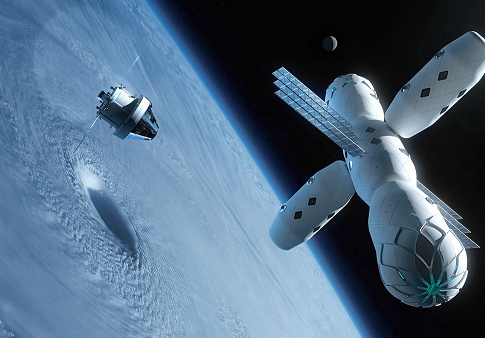NASA’s GRX-810 alloy is 1,000 times durable and twice as strong as the current alloys NASA can 3D print.
NASA has invented a new superalloy that may change the way we build airplanes and spaceships. Current state-of-the-art 3D-printed metal parts can sustain up to 2,000 degrees Fahrenheit before melting, limiting their use in critical applications that involve extreme operating conditions.
But according to NASA, its new wonder material is “twice as strong, over 1,000 times more durable, and twice as resistant to oxidation” than current solutions. These features, according to NASA’s Glenn Research Center researcher Dr. Tim Smith, will allow the aerospace industry to use additive manufacturing technology where it was impossible to do so before.Smith says NASA initially plans to use the material, currently called GRX-810, in printing “injectors, nozzles, combustor domes,” and any airplane and spaceship parts that need to be able to endure extreme heat without failing. The new alloy will bring many advantages that weren’t previously available to the aerospace industry through 3D printing.
Its ability to withstand high temperatures will allow designers to print lighter parts and operate those parts at higher (more efficient) engine temperatures. This will result in lighter spaceships, which could lead to more payload and higher speeds, dramatically increasing the abilities of airplanes and rockets.
Right now, he says, printed parts are limited to a few inches in size due to the specific additive laser machine used to 3D print GRX-810. But they are changing the 3D printing process to a new technique that uses higher direct energy deposition in a much larger enclosure. “If successful, we can start producing parts in orders of feet instead of inches,” Smith says.Smith is the lead author of a peer-reviewed paper published in Nature that details the research, along with his co-inventor Christopher Kanzos and a team at Ohio State University. He believes that “this superalloy has the potential to dramatically improve the strength and toughness of components and parts used in aviation and space exploration.”
The invention of GRX-810 achieves one of the holy grails of 3D printing manufacturing. “We’ve always known that incorporating nano-scale oxides into a metal will significantly improve its high temperature properties,” Smith tells me. “The issue is that there was no easy method to do so.” For these “oxide dispersion strengthened (ODS) alloys,” tiny oxide particles in the alloy are the key to their strength, temperature resistance, and, counterintuitively, its resistance to oxidation. The team used advanced computer modeling to organize the alloy’s complex layering and then lasers to fuse the necessary components.
In addition to the parts they are initially going to tackle, Smith says that “[this material] may also allow for additive manufacturing parts to be used in applications that they previously couldn’t be utilized.” Basically, anything that currently requires a laborious hand-made process will benefit from this manufacturing method. Plus, higher endurance and resistance should also translate to less maintenance and better reusability.
In a statement, Dale Hopkins—deputy project manager of NASA’s Transformational Tools and Technologies—emphasized that this new alloy is such a leap that “it may well be one of the most successful technology patents NASA Glenn has ever produced.”
It all sounds extremely exciting and we will not have to wait to see if it has the impact they speak about. As Smith tells me, they hope to hot-fire GRX-810 components in the next two or three months.


